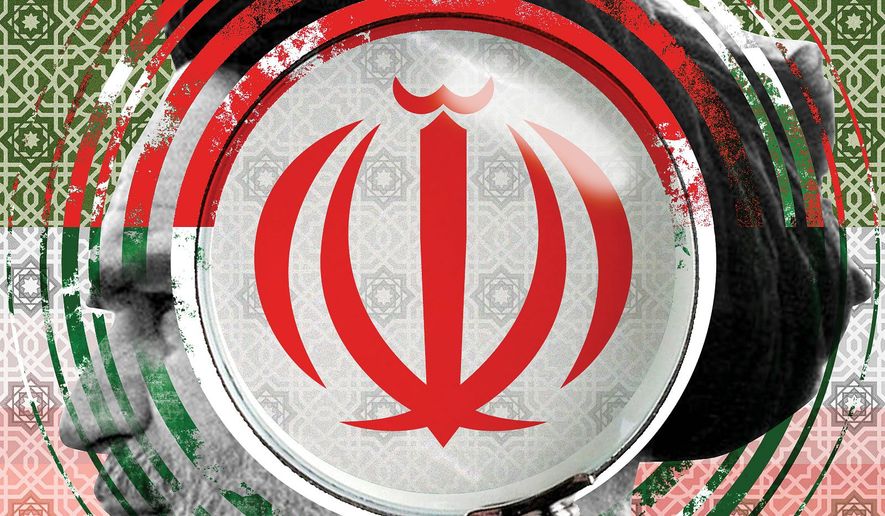OPINION:
In early 1979, I was sent to Iran to report on the rebellion then underway. I was woefully ignorant of Iranian history, politics and theology. But older, more experienced colleagues in the journalistic, diplomatic and intelligence communities also misunderstood would become known as the Islamic Revolution.
So, it was with both curiosity and pleasure that I’ve been reading “The Last Shah: America, Iran and the Fall of the Pahlavi Dynasty,” an enlightening new history by Ray Takeyh, the Hasib J. Sabbagh Senior Fellow for Middle East Studies at the Council on Foreign Relations.
Among the revelations: By the late 1970s, the U.S. intelligence community, and William Sullivan, America’s last ambassador in Tehran, knew full well that Iran was not, as President Carter curiously proclaimed on Dec. 31, 1977, “an island of stability.”
On the contrary, Shah Mohammad Reza Pahlavi’s government was riddled with corruption and dissent. His health was in decline, along with his popularity. He was “devious and cynical,” writes Mr. Takeyh but, to his credit, he would not contemplate a bloody crackdown against his opponents because “he sincerely believed that a monarch should not kill his subjects.”
The opponents that most concerned Ambassador Sullivan were Iran’s Communists even though, Mr. Takeyh writes, the Tudeh had become a “dormant political party.” Foreign reporters like myself were inclined to focus on Western-educated reformers. What few analysts perceived: It was the religious extremists who were at history’s helm.
For years, they had been mixing Islamic theology with Marxism, refashioning Shiism into what Mr. Takeyh calls “a religion of dissent led by rebels seeking social justice.”
They regarded modernization, the shah’s main pursuit, as “borrowing ideas from Europe and America,” and they rejected it.
Among those advancing such ideas was a dour cleric living in exile, first in Turkey and Iraq, then in France, who “stood above everyone else in terms of courage and charisma.”
A book published by Ayatollah Ruhollah Khomeini in 1970, “Islamic Government,” had attracted little attention. It’s most audacious proposal, Mr. Takeyh writes, was that “the clergy should assume political power. This contravened Shia thought” which had long emphasized that “the guardians of faith should keep their distance from centers of power” until the return of the “Hidden Imam,” a messianic figure.
Mr. Takeyh notes too: “Khomeini’s contempt for democratic rule and his hatred of religious minorities are evident throughout the text.”
In November 1978, Ambassador Sullivan sent a diplomatic cable to Washington suggesting that Khomeini might be persuaded to compromise with moderate dissidents, and “return to Iran in triumph and hold a Gandhi-like position in the political constellation.”
“As an emissary of a secular republic known for its pragmatism,” Mr. Takeyh explains, “Sullivan simply could not comprehend revolutionaries who meant what they said.”
The shah fled Iran on Jan. 16, 1979. Khomeini returned to Iran on Feb. 1, proclaiming that he was not leading “a nationalist rebellion” but rather a “Quranic rebellion,” an “Islamic rebellion.”
A referendum was held in March. Iranians were asked to vote yes or no to the founding of an Islamic Republic. The “yes” ballot was colored green, the “no” was red. Voters had to request one of the other.
Almost no one asked for a red ballot. If a similar plebiscite were held today, would the results be the same? My guess is yes, if — now as then — mullahs were supervising the not-secret balloting.
Over the months that followed, “Liberals were cast aside and traditional clergy were forced to comply with the new strictures. Women’s rights were curtailed and religious minorities endured persecution.”
Islamic courts were established and those who had served the shah were summarily tried, convicted and executed for such crimes as “spreading corruption on earth.” When one defendant asked what that meant, the judge replied: “What you are guilty of.”
Mr. Takeyh adds: “Scores of Arab and Kurdish separatist leaders, and then the leftists who had cheered when the shah’s officials were put to death, also faced the mullahs’ wrath.”
Thousands are estimated to have been killed. Nevertheless, Supreme Leader Khomeini — the new title awarded him by the Islamic Republic’s constitution — would later regret that he had not gone further, that he had not, in his words, “set up gallows in the main squares and cut down all the corrupt people. In the presence of God Almighty and the dear nation of Iran, I apologize for our mistakes.”
Along with most reporters, I left Iran before summer. After that, news from the Islamic Republic seldom made the front pages. Then, on Nov. 4, 1979, as crowds outside the U.S. embassy in Tehran chanted “Death to America!” several hundred young followers of the supreme leader breached the walls. The diplomats inside were held hostage for 444 days.
Khomeini died in 1989. He was succeeded by Ali Khamenei, now 81, who has remained an ardent Khomeinist, burning with hatred of America. He and Iran’s other theocrats, Mr. Takeyh writes, are in pursuit of “the most ambitious imperial venture in Iran’s modern history.”
Too many in the journalistic, diplomatic and intelligence communities still don’t understand that. Nor, clearly, do the 150 House Democrats who last week signed a letter urging Joe Biden to re-enter the Joint Comprehensive Plan of Action, a deal that doesn’t curb the regime’s support for terrorism, its threats to Iran’s neighbors or its suppression of the Iranian people.
Despite repeated claims to the contrary, it also doesn’t stop Iran’s rulers from acquiring nuclear weapons and missiles to deliver them to targets anywhere — America included. On the contrary, it leads to that outcome with a promise of American and European acquiescence. Ayatollah Khomeini would be pleased.
• Clifford D. May is founder and president of the Foundation for Defense of Democracies (FDD) and a columnist for The Washington Times.




Please read our comment policy before commenting.